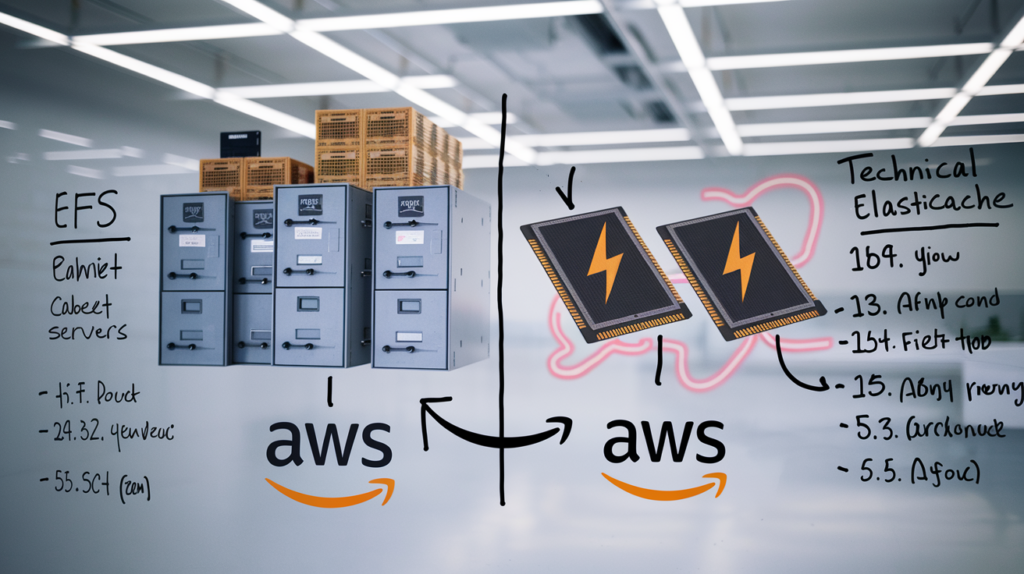AWS Cross-Zone Load Balancing: What It Is and How It Works
As cloud-native applications scale across multiple Availability Zones (AZs), efficient traffic distribution becomes critical for performance and resilience. AWS Cross-Zone Load Balancing plays a vital role in achieving this balance, especially for applications deployed across different AZs in a region. In this guide, we will explore cross-zone load balancing, how it works, its benefits, limitations, and when you should use it.
What is AWS Cross-Zone Load Balancing?
Cross-Zone Load Balancing is a feature in AWS that allows Elastic Load Balancers (ELBs) to distribute traffic evenly across all registered targets, regardless of the Availability Zone (AZ) they are in. This ensures that traffic from a client in one AZ can be routed to instances in other AZs, enhancing resource utilization and improving fault tolerance.
This feature is supported by:
Application Load Balancer (ALB)
Network Load Balancer (NLB)
Classic Load Balancer (CLB)
How Cross-Zone Load Balancing Works
Let’s break it down:
Without Cross-Zone Load Balancing:
Load balancers only route traffic to targets in the same AZ as the client.
This can cause uneven load distribution if one AZ has fewer or overburdened instances.
With Cross-Zone Load Balancing Enabled:
The load balancer can distribute incoming requests to all healthy targets in all AZs.
Each target receives an equal share of the traffic, regardless of which AZ the request originated from.
Example Scenario:
Imagine you have two Availability Zones:
AZ1 with 2 EC2 instances
AZ2 with 1 EC2 instance
Without Cross-Zone Load Balancing:
AZ1 handles more requests due to having more instances.
AZ2’s instance may get overloaded.
With Cross-Zone Load Balancing:
All 3 instances receive an equal share of the total requests, even if a request originates in AZ2 and is processed by an instance in AZ1.
How to Enable Cross-Zone Load Balancing
For Application Load Balancer (ALB):
Enabled by default and free of additional cost.
For Network Load Balancer (NLB):
Must be explicitly enabled.
Note: Charges apply for inter-AZ traffic.
For Classic Load Balancer:
Can be enabled in the console or CLI under load balancer attributes.
# Example using AWS CLI
aws elb modify-load-balancer-attributes \
--load-balancer-name my-load-balancer \
--load-balancer-attributes CrossZoneLoadBalancing={"Enabled"=true}
Benefits of Cross-Zone Load Balancing
Improved Resource Utilization: Evenly distributes load across all targets.
Better Fault Tolerance: Surviving AZs can handle requests if one AZ fails.
Simplified Scaling: Less dependence on equal instance counts per AZ.
Greater Flexibility: Application design is more resilient to unbalanced AZs.
Considerations and Limitations
NLB Charges: Inter-AZ data transfer incurs additional costs for NLB.
Latency Sensitivity: Requests might traverse AZ boundaries, possibly adding a slight latency.
Target Health: Ensure health checks are accurately configured across all AZs to avoid routing traffic to unhealthy targets.
Best Practices
Use ALB for web applications where cross-zone is needed with no cost.
Monitor traffic patterns and costs when using NLB with cross-zone.
Pair with Auto Scaling to ensure a healthy and scalable infrastructure.
Deploy targets evenly across AZs if cross-zone is disabled.
When Should You Use It?
Use Cross-Zone Load Balancing when:
You have uneven target groups across AZs.
You need uniform load distribution regardless of AZ count.
You're seeking high availability and fault tolerance.
Avoid or carefully evaluate it when using NLB in cost-sensitive environments, especially when traffic between AZs is significant.
Conclusion
AWS Cross-Zone Load Balancing is a powerful feature that enhances your applications' availability, scalability, and fault tolerance. Whether running a microservices architecture or a legacy monolith, understanding and leveraging this feature correctly can lead to more resilient infrastructure and better user experiences.

Comments
Post a Comment